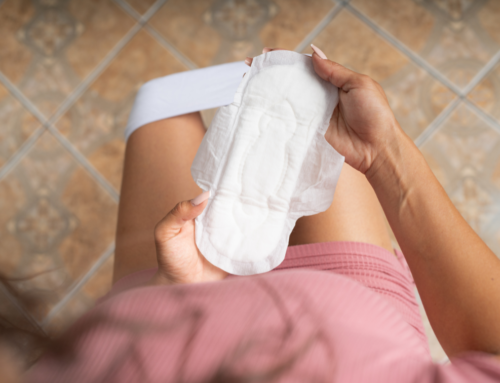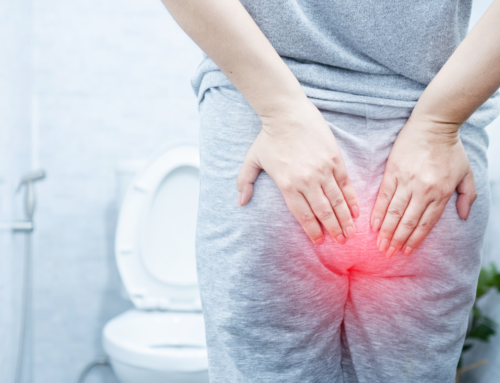 What is Incontinence?
What is Incontinence?
Any time you pee without meaning to, that is known as incontinence. Even if it is just a little. The fancy definition is “unintentional loss of urine.” And it happens to a lot of people, for a variety of reasons. Unfortunately, there is a significant stigma associated with urinary accidents. So there are lots of people that go out of their way to hide their condition. Incontinence has become common in our culture. And more and more people believe that incontinence is a normal part of aging. It may be common, but it is not normal.
Different kinds of incontinence
Accidents and leaks occur in different ways. For some, they have a sudden urge to go to the bathroom, and it can’t wait. Racing to the toilet, or even just standing up is all the time they have before, “oh, No! My pants are wet!” This is called Urge Incontinence. It can be a small leak, or a flood. Sometimes there are things that trigger the leak, like putting you key in the door of your house- yup, that’s a thing- or driving in the car. Urge Incontinence can sometimes go hand in hand with urinary frequency. Which is the need to go to the toilet many times per day.

Key-in-the-door accidents are common
Stress Incontinence occurs when there is additional pressure added to your abdominal cavity. This can happen when you cough or sneeze. The pounding from running, or climbing stairs can also cause leaks. Lifting or carrying heavy things can also cause incontinence. Usually stress incontinence starts as a little annoyance. Small leaks that wet your underwear during a specific activity, like coughing. Over time, you make adjustments, like wearing a panty liner, then a pad, then keeping a change of clothes stashed somewhere for “bad days.” Often the symptoms slowly get worse over time.
Many people have a combination of the symptoms mentioned above, which would be called Mixed Incontinence. Simply put, our bodies are complex, and have a variety of ways we compensate when something is not working well. Sometimes, when something goes wrong, it starts a downward spiral.
In some cases, it is difficult to fully empty your bladder. This can be due to organ prolapse, or injury, or decreased contraction of the bladder muscles. After urinating, you might leak a small ongoing dribble, Or drip as soon as you stand up. This is known as Overflow incontinence.
A person can have no issues with their urinary tract, or pelvic floor, but still have incontinence. Functional Incontinence may occur with a person with a spinal cord injury, dementia, and with use of some medications, where the problem is more about not knowing you need to go, or not understanding. Inability to move safely and quickly enough to get to the toilet is also considered functional incontinence.
Okay, So what do you do about incontinence?
The simplest and most straightforward reason for stress incontinence is that the pelvic floor muscles have become weak. This can occur when a person sits for prolonged periods. Or when the person does not naturally activate their pelvic floor during walking and movement. And, of course after having any kind of trauma, such as child birth, or surgeries.
If weakness is the problem, then exercise is the primary solution. Many people have heard of Kegel exercises. This is an active tightening of the pelvic floor muscles with intent to strengthen them. Named after Gynecologist Arnold Kegel, who first identified the technique in 1948, Kegel exercises can be effective for strengthening muscles and improving closing pressure to the openings in the pelvic floor. Performing Kegel exercises for several weeks-to-months may improve your symptoms without any additional treatment needed.
Kegels Don’t Fix Everything
However, there are many reasons for incontinence that are not simply due to weakness. Also, studies show that when people are asked to perform Kegel exercises, as much as 40% of participants perform them incorrectly. Other reasons for incontinence are poor coordination, poor bladder habits, diet, inability to actively contract the pelvic floor (decreased body awareness), decreased flexibility of the pelvic floor muscles and fascia, organ prolapse, and difficulty with walking.
So, if you have tried doing Kegel exercise on your own, and it hasn’t helped your incontinence, there might be good reason. If there is no improvement after 3-4 weeks, then it is probably time to get an assessment from a medical professional. Your OBGYN or Urologist can help with strategies and medications that can help symptoms. And a Pelvic Floor Therapist can help ensure pelvic floor muscles working at their best, and minimize symptoms with diet and lifestyle recommendations.
People with incontinence sometimes try not to laugh, so they won’t leak. Don’t wait any longer. Get your laugh Back.
Holly McDonald is a Pelvic Floor Physical Therapist practicing in Winston Salem North Carolina. Her outpatient clinic, Relief physical Therapy, specializes in pelvic floor rehabilitation and pelvic health.
Additional Articles
Finding hope for people suffering from IC/PBS







